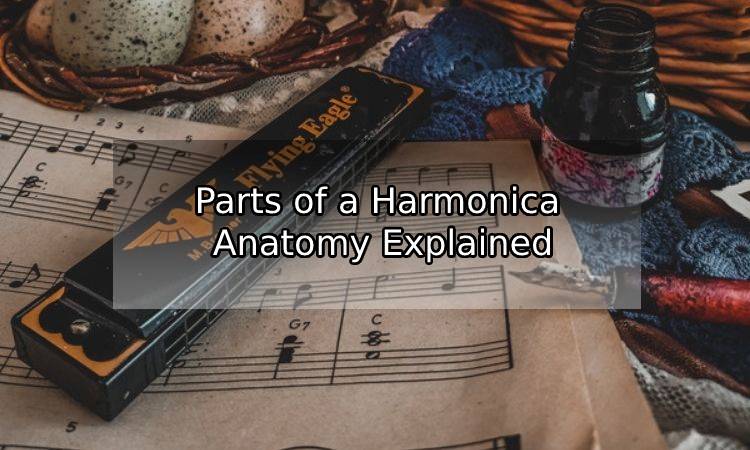Before you begin playing harmonica, it’s helpful to know its various parts and how they work together to produce sound. Diatonic harmonicas contain just nine main parts: the reeds, rivets, reed plates, comb, cover plates, slots, holes, chambers, and screws.
- Reeds: Small rectangular pieces of metal (usually brass) that produce sound when vibrated by breath. Blow reeds vibrate in response to pressure (when you blow into the harmonica’s holes). Draw reeds vibrate in response to suction (when you draw air from the hole). The reed size determines the note it produces when the player blows or draws. Longer reeds produce lower notes, while shorter reeds produce higher notes.

- Reed plates: The brass platform that holds the reeds. A harmonica has two plates: one that holds blow reeds and one that holds draw reeds. Each reed plate contains a number of slots onto which the reeds are mounted by small metal rivets.
- Comb: The main supporting component of the harmonica, the comb (so named because it resembles a hair comb) contains holes into which you blow, and chambers that surround each reed and direct the air inward or outward to vibrate the reed. Metal combs tend to produce a tinny, high-pitched sound, whereas wood combs produce a deeper, richer, more natural tone. The longest reeds (and lowest notes) are sounded by playing the leftmost holes of the comb, and the shortest reeds (and highest notes) are sounded by playing the rightmost holes.

- Cover plates: Metal, wood, or plastic plates that hold the components of the harmonica together and amplify its sound. The size and quality of the cover plates can influence the tone: smaller openings in the cover plates can make the harp sound muted, whereas higher-quality materials create a better tone. A few screws driven into the cover plates hold the harmonica together.

FAQs
Wrapping Up
Understanding the anatomy of a harmonica is essential for both new and experienced players. By familiarizing yourself with the key parts—such as the body, comb, reeds, reed plates, and cover plates—you can better appreciate how each component contributes to the harmonica’s sound. The comb directs airflow, the reeds produce the sound, and the cover plates shape and project it. Regular maintenance, including cleaning and proper handling, will help ensure your harmonica remains in top condition and continues to deliver the best performance. Remember, each part of the harmonica plays a vital role, and knowing their functions will enhance your playing experience. Explore your harmonica with this knowledge and make the most of every note.

